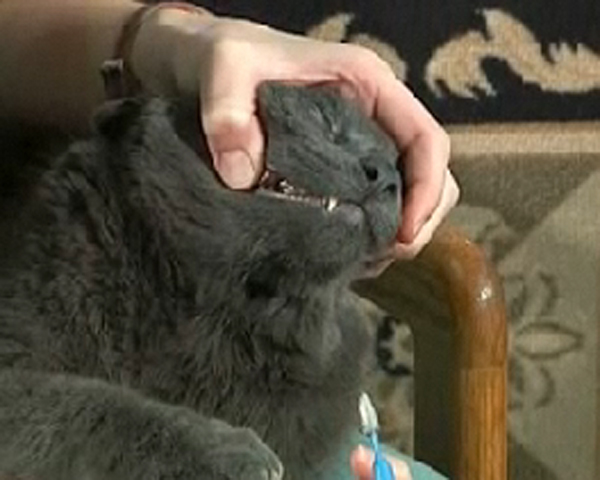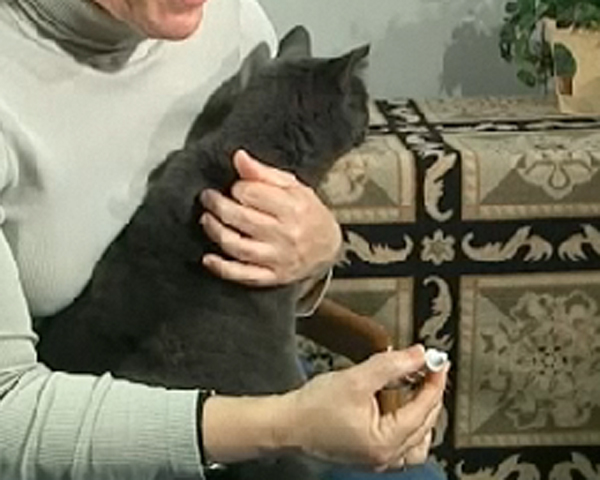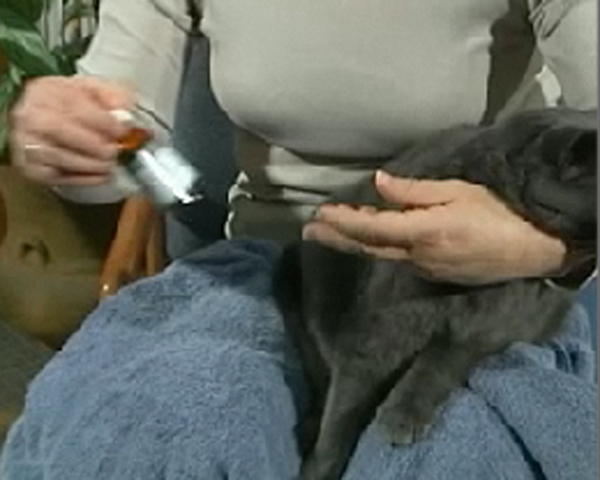Erin Centre Animal Hospital
3700 Eglinton Ave W, Unit #54
Mississauga, ON L5M 2R9, Canada
Helpful Tips for Cats
-

Brushing your cat’s teeth
Instructions Teaching your cat to accept brushing will take some training, but will be very beneficial to the cat once he is accustomed to the process. Daily brushing is most beneficial and will help to establish a routine for your pet, but brushing twice a week is acceptable if your schedule can’t accommodate daily brushing. Choose a quiet time and place to start the brushing. It is best to teach your cat to accept brushing while he or she is still a kitten. If you have an older cat, the process may take a little longer. Hold your cat securely in your lap. Start by rubbing your finger or a soft cloth over the cat’s teeth in a back-and-forth motion. Be careful to stay on the outsides of the cheek teeth to avoid being bitten by accident. Once the cat is comfortable with this, you may try letting him or her taste a little bit of toothpaste from your finger. Pet toothpaste is recommended and is very appetizing to most cats and may make brushing more enjoyable for them. Human toothpaste should not be used as it can result in your cat having an upset stomach. Once the cat has accepted the taste of the toothpaste, apply a small amount to a toothbrush and begin by placing your free hand over your cat’s head with your thumb and index finger on opposite sides of your cat’s upper jaw. Gently raise your cat’s lip on one side and begin by brushing one or two cheek teeth. A human inter-dental toothbrush works well for most cats. With this type of toothbrush, it should be placed right along the gum-line and used in a straight back-and-forth motion. Start from the back and work toward the midline of the jaw. In order to brush…
-

Administering eye drops to your cat
Make sure that you wash your hands both before and after administering the medication to prevent the spread of infection.
-

Giving liquid medication to your cat
The easiest way to give your cat liquid medication is to mix it in with some canned food. To ensure that the medication is actually taken, it is best to give a small amount of food that the cat is certain to eat rather than a large portion that the cat may not complete. Some cats may be unwilling to eat the food or may have dietary restrictions that prevent you from using this technique. If this is the case, you will need to administer the medication directly into the cat’s mouth.
-

Giving your cat a pill
The easiest way to give your cat a pill is to hide the pill in food. This usually works best if the pill is hidden in a small amount of tuna or cream cheese. To ensure that the pill is actually taken, it is best to give a small amount of food that the cat is certain to eat rather than a large portion that the cat may not complete. Some cats may spit out the pill, so it is important to monitor this activity. If your cat persists in spitting out the pills or if dietary restrictions prevent you from hiding the pills in an appealing treat, you will need to administer the pill directly into the cat’s mouth.
-

Administering ear drops to your cat
Instructions Remember that the ear may be very painful and that the cat may respond by scratching and biting. Warm the medication by standing the bottle in a bowl of warm water for a few minutes. Hold the cat securely in your lap. You may need to have someone help you by wrapping the cat in a blanket with only the head exposed. Make sure you have carefully read the label and understand the dosing instructions. Draw up the liquid into the dropper. Use the last two fingers of the same hand to hold the tip of the ear. Place your remaining hand under the cat’s jaw to support the head. Apply a small amount of medication into the ear. Rub the ear against the cat’s head in a circular motion. Be cautious and gentle. The cat may not allow you to do this. Release the ear and let your cat shake its head. If the medication contains a wax solvent, debris will be dissolved so it can be shaken out.
